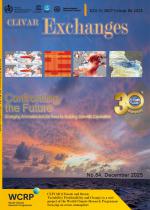Background
The Southern Ocean is the largest oceanic sink of both anthropogenic heat and carbon, and plays a key role in natural mitigation of global warming. Despite its remoteness, the Southern Ocean thus plays a major role in influencing the climate that we currently experience and will increasingly steer our actions over the 21st Century. Oceanic heat is the greatest threat to the Antarctic Ice Sheet (AIS): accelerated mass loss has been observed over the past two decades and a further acceleration of the rate of loss is projected over the coming century and beyond. This will cause sea-level rise, directly affecting populated coasts across the globe. Moreover, the meltwater added to the Southern Ocean is anticipated to alter large-scale ocean circulation with unknown consequences for heat and carbon sequestration.
Numerical climate models used for climate projections forming the basis of the Assessment Report of the United Nation’s International Panel on Climate Change (IPCC AR6), namely CMIP6-type models, do not include interactive ice sheets or ice shelves and thus they do not simulate the interaction between the ocean and these cryosphere components, neglecting important impacts and feedbacks associated with increasing mass loss from the AIS. This is a major uncertainty unaccounted for in current state-of-the-art climate projections. While model development has been progressing significantly over the past decade, major improvements in ice-ocean coupling are still not operational as associated processes are complex and observations necessary for model development and validation are lacking.
Several studies have attempted to quantify the impacts of AIS meltwater on the global climate system through idealized meltwater perturbation experiments in which additional freshwater is released to the ocean in a coupled climate model. These previous studies have used widely varying experimental designs, including differing magnitudes and spatio-temporal distributions of freshwater forcing, differing methods to impose freshwater and heat fluxes associated with the meltwater, and a variety of model configurations including intermediate complexity as well as comprehensive models and a range of model grid resolutions. While past studies have revealed a number of robust responses across model and experimental configurations, such as surface cooling, sea-ice expansion, deep warming and reduction in bottom water formation, the actual magnitude of such impacts remains highly uncertain. We have determined that the inconsistency in experimental designs across previous studies inhibits our understanding of the climate impacts of Antarctic mass loss and the uncertainties associated with not accounting for this forcing in climate projections.
Understanding the future evolution of the real climate system and its impact on society requires better quantification of the important feedback associated with AIS meltwater. Robustly quantifying the climate response to freshwater input, and its uncertainty, requires a new multi-model model ensemble with a coordinated experimental design. This is the goal of the Southern Ocean Freshwater-release model experiments InitiAtive (SOFIA), which was initiated in October 2021 and gained a lot of momentum over the last year, now counting 20 active participants of 9 modelling groups from 8 nations across the globe.











Add new comment